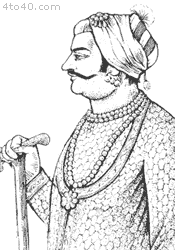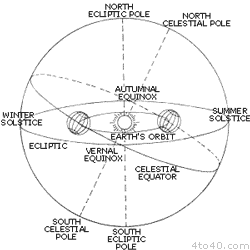 Sawai Jai Singh II — It was all very, very romantic. The night sky above the Amber fort, atop the craggy hills overlooking what is now Jaipur city, was at its most enchanting. And on a terrace watching the moon and the stars were a princess and a king. The princess had only that day been rescued by the king from a gang of brigands. They were both comely and in love with each other.
Sawai Jai Singh II — It was all very, very romantic. The night sky above the Amber fort, atop the craggy hills overlooking what is now Jaipur city, was at its most enchanting. And on a terrace watching the moon and the stars were a princess and a king. The princess had only that day been rescued by the king from a gang of brigands. They were both comely and in love with each other.
But, alas for romance. Though the princess did say it was heavenly, with something of a sigh of rapture, the question she asked was one that no Hollywood or Bombay film script writer would have ever thought of putting into the mouth of any of his heroines. The question was, “How far away are these stars and the moon?”
If the lover in the king was abashed by the question, so also was the astronomer in him. For the king, Sawai Jai Singh II, who had long been interested in astronomy, did not know the answer. When the princess gently chided him for his ignorance, all thoughts of romance fled and he decided that he must find the answer to her question. The princess he had rescued, a Muslim, thus set the Hindu king to a course that made him one of the greatest astronomers and mathematicians of his time.
Astronomers were invited to his court for study and discussions and the king read all the treatises he could find on the subject. Although history has forgotten the name of that beautiful princess, the Jantar Mantar (observatories) which the king built to gain her love and admiration still stand in New Delhi, Jaipur, Varanasi and Ujjain. Unfortunately, the one at Mathura was destroyed by building contractors who wanted the stones.
 When Jai Singh was born in 1686, the Moghul Empire was about to disintegrate. He managed to keep good relations with Emperor Aurangzeb from age of 13, when he succeeded to the throne of Amber. He even upon the Emperor’s heart when in 1701 he defeated the Marathas in battle and captured him with the title of “Sawai,” meaning that he was a quarter more than a man.
When Jai Singh was born in 1686, the Moghul Empire was about to disintegrate. He managed to keep good relations with Emperor Aurangzeb from age of 13, when he succeeded to the throne of Amber. He even upon the Emperor’s heart when in 1701 he defeated the Marathas in battle and captured him with the title of “Sawai,” meaning that he was a quarter more than a man.
With the death of Aurangzeb in 1707, the Moghul empire began to crumble. Conspiracy, assassination and dirty politics became a part of the proceedings at the Delhi court. Finally, Muhammad Shah, a young lad of 19, was installed on the throne in Delhi in 1719 and surprisingly survived all attempts to dethrone and assassinate him. His 20-year rule ended when Nadir Shah defeated him in the battle of Panipat, sacked Delhi and took away the famous Peacock Throne.
During those turbulent times, King Jai Singh was consolidating not only his political position but his stature as astronomer and architect. In 1727 he planned and designed a new capital Jaipur (Jai’s City), marvelous example of town planning and architecture. He made Pandit Jagannath, a Maratha Brahmin well versed in Persian, Sanskrit and Arabic, his guru. He collected astronomical treatises and tables from Portugal, Arabia and Europe. His collection included the English astronomer, John Flamsteed’s Historia Coelestis Britannica, Pere de la Hire’s Tabulae Astronomicae, Ulugh Beg’s tables, Zij Ulugh Begi, and Ptolemy’s Almagest.
 He ordered the translation of these treatises into Sanskrit and gave them Sanskrit names. For instance, he called Ptolemy’s treatise Siddhantasurikaustubha, Ulugh Beg’s tables Turusurni and la Hire’s tables Mithiajeevachayyasurni. He also got a telescope from Europe and even began to build telescopes.
He ordered the translation of these treatises into Sanskrit and gave them Sanskrit names. For instance, he called Ptolemy’s treatise Siddhantasurikaustubha, Ulugh Beg’s tables Turusurni and la Hire’s tables Mithiajeevachayyasurni. He also got a telescope from Europe and even began to build telescopes.
Jai Singh got the telescope late in life. His earlier observations were conducted using astrolobes and other instruments. With these was able to detect errors in the tables of Indian, Arab and European astronomers. Actually, the earlier astronomers were not to blame. The positions of all heavenly bodies had shifted because of a change in direction of the axis of rotation of the earth or “precession.”
When Jai Singh brought the errors to the notice of Emperor Muhammad Shah and told him how they affected the timings of Hindu and Muslim religious festivals and rituals, he was asked to correct them and offered money and other help for the task. In 1724, the first Jantar Mantar was built in Delhi and in 1734 Jai Singh published his observations made in Delhi in the form of tables in Persian titled Zij Muhammad Shahi in honour of his patron, the Emperor.
 Jantar Mantar is the distorted form of the word which in Sanskrit means “instruments and formulae.” For designing these massive instruments Jai Singh consulted Pandit Vidyadhar Bhattacharya, who later also assisted him in designing Jaipur city. In those days, small brass instruments were in use in Europe, but Jai Singh preferred the huge masonry structures of lime and plaster he built similar in design to those in Ulugh Beg’s huge observatory in Samarkand. He claimed that these were far more accurate. He made his observatories available to anyone who wanted to study astronomy, hoping to make the science popular.
Jantar Mantar is the distorted form of the word which in Sanskrit means “instruments and formulae.” For designing these massive instruments Jai Singh consulted Pandit Vidyadhar Bhattacharya, who later also assisted him in designing Jaipur city. In those days, small brass instruments were in use in Europe, but Jai Singh preferred the huge masonry structures of lime and plaster he built similar in design to those in Ulugh Beg’s huge observatory in Samarkand. He claimed that these were far more accurate. He made his observatories available to anyone who wanted to study astronomy, hoping to make the science popular.
Among the instruments he designed himself are Samrat Yantra, Ram Yantra, and Jai Prakash. The first is basically a huge right-angled gnomon, a kind of sundial, which measures time to an accuracy of half a minute. It is also used to determine the altitude of the sun and the positions of equinoxes and solstices. The Ram Yantra, a tall pillar inside a graduated cylinder, measures the altitude and azimuth of heavenly bodies to a high degree of accuracy.
The most original of all is the Jai Prakash, a wide concave bowl on which the positions of all heavenly bodies can be mapped round the clock.
Jai Singh made two fundamental contributions to astronomy. One is the measurement of the precession of the equinoxes and the other the obliquity of the ecliptic. His findings are far more accurate than those of his predecessors like Ptolemy and Ulugh Beg.
Surprisingly, Jai Singh confined himself to observation. He never gave thought to whether the earth moves round the sun or vice versa. He accepted Ptolemy’s geocentric concept of the universe. Copernicus’s heliocentric concept, which claims that the sun is at the center, and all the planets, including the earth, move round it, a widely accepted view then in Europe, made no impression on him. It is possible that he deliberately ignored the Copernicus concept fearing that his support to it would upset the priests.
 Kids Portal For Parents India Kids Network
Kids Portal For Parents India Kids Network






